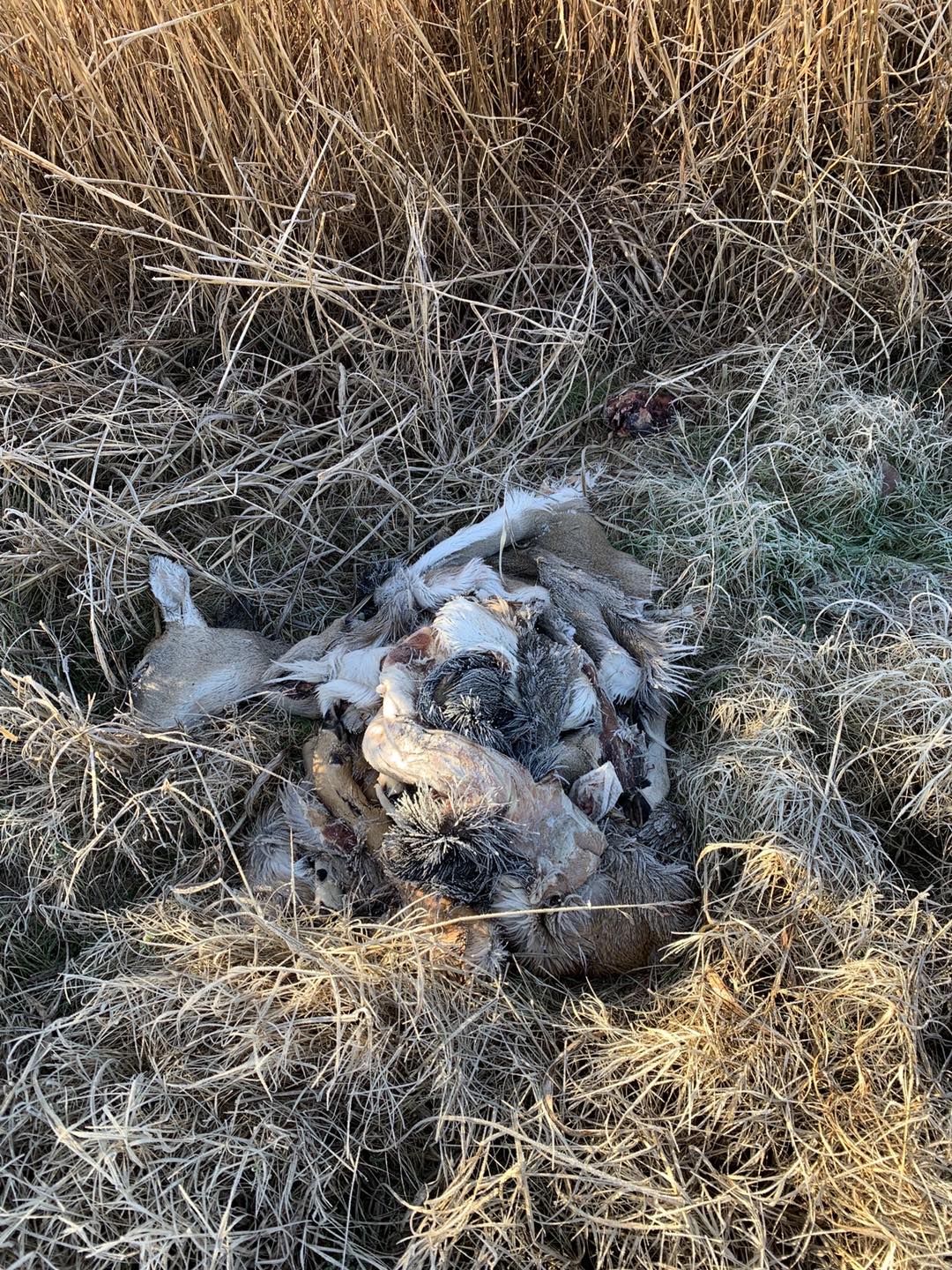An off-duty Oklahoma game warden thought he saw a deer carcass next to a road. Then he realized it was actually a huge pile of deer parts and trash

One of the piles beside the road; deer legs lined up in Murray’s truck. Photograph via Oklahoma Game Wardens / Facebook
One Oklahoma resident is facing charges for illegal dumping after an off-duty game warden came across two piles of deer legs, organs, heads, skins, and other parts mixed with household trash, next to a road.
On Nov. 27 game warden Mark Murray was driving east of Jones, Oklahoma in the central part of the state when he noticed what he thought was a deer carcass on the side of the road, according to an Oklahoma Game Wardens statement posted Wednesday. But as Murray approached the carcass, he realized it was actually a discarded pile of deer parts. It was mostly comprised of legs — many of them tagged with what appeared to be hunting license and confirmation numbers — as well as stomachs, livers, hides, tails, and pieces of garbage. Tire tracks on the right-of-way led to a second similar pile nearby.

Murray and game warden Dalton Bluey suspected a processor had dumped the parts and began investigating. They collected 172 legs and, working through the state’s hunter database, got in touch with many of the hunters associated with the confirmation numbers. Each one reported taking their deer to the same meat processor.
The following day, Bluey and wardens Mike France and Tim Campbell interviewed the processor who had been named. The processor explained that their business gives leftover legs and offal to multiple people, who use the parts for everything from fertilizer to chicken feed. Additional interviews led Bluey to an individual who received the discards in question from the processor. That suspect confessed to dumping the piles and charges are now pending, according to the Oklahoma Game Wardens Facebook page. Illegal dumping is a misdemeanor in Oklahoma. Penalties can range from a $500 to $5,000 fine and up to 30 days in county jail. It is possible additional charges for improper carcass disposal will also apply.
Read Next: Zombie Deer Disease: CWD’s Unfortunate Nickname
Improper deer carcass disposal poses a chronic wasting disease risk to free-roaming cervid populations. Prions that live in brain and spinal matter, which are often parts of discard piles like the ones the wardens found, can survive in the environment for years. Those prions can then infect living deer that interact with them through grazing or otherwise. Oklahoma produced its first CWD-positive free-roaming deer on June 6 in the panhandle. A second deer tested positive a month later. The Oklahoma Department of Wildlife Conservation defines proper deer carcass disposal as burial, disposal at approved lined landfills, and leaving the carcass where it died to prevent further spread. Improper disposal includes dumping the carcass in water, burning the carcass, or transporting it to be left out in the open elsewhere.
